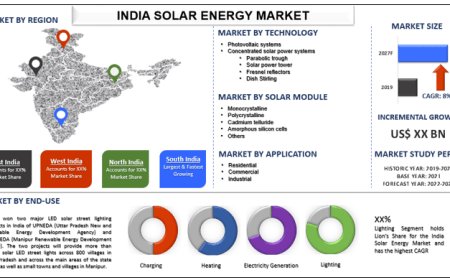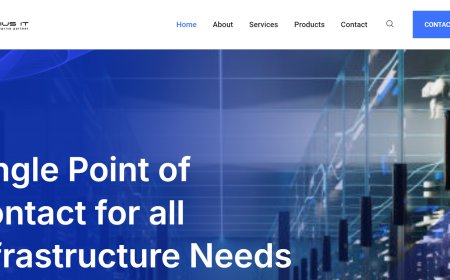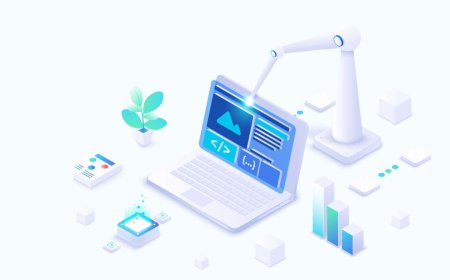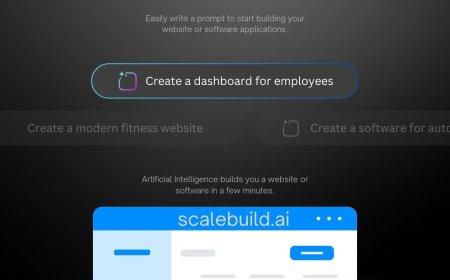How Much Should You Budget for LLM Development in 2025?
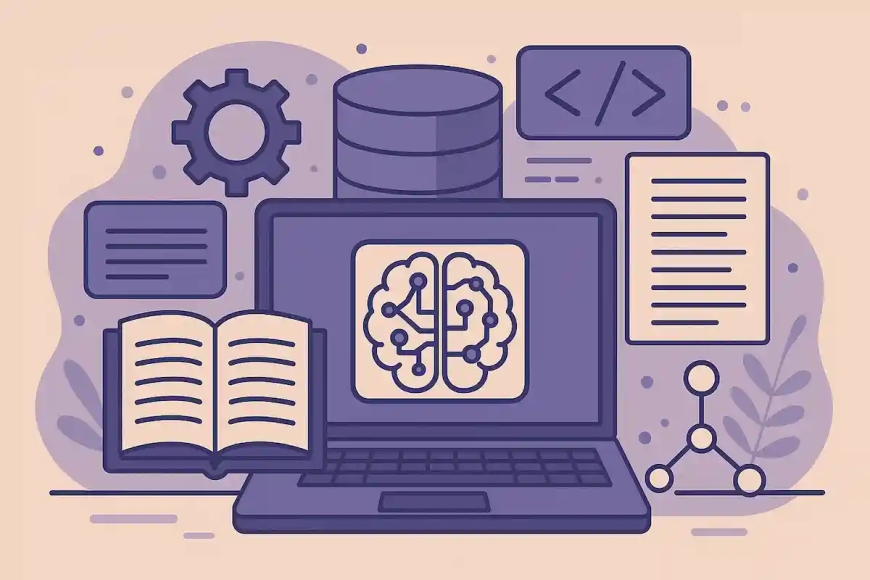
Large Language Models (LLMs) are reshaping the way businesses operate. From intelligent customer service chatbots to internal data assistants and document summarization engines, LLMs are unlocking new levels of productivity and automation. But as businesses look to integrate these capabilities, one pressing question arises: what exactly does LLM development costand more importantly, what are you actually paying for?
In this blog, well break down the real components behind the cost of LLM development services. Beyond just building a model, you'll discover how factors like data preparation, fine-tuning, infrastructure, and ongoing optimization all contribute to the final price. If youre planning to invest in LLM technology, this guide will help you understand where your budget is going and how to ensure you get full value from your investment.
What Are LLM Development Services?
LLM development services refer to the suite of technical and strategic tasks involved in building, customizing, deploying, and maintaining large language models for specific business use cases. These services may include selecting the right model architecture, preparing datasets, fine-tuning on domain-specific data, integrating the model into software products, and providing post-deployment monitoring and updates.
The goal of LLM development services is to create a solution that aligns with your business goalswhether its automating knowledge work, enhancing customer interactions, or supporting internal teams with intelligent tools. While open APIs like GPT-4 or Claude can be used for basic needs, most enterprises eventually require private, customized models for data privacy, brand voice, or compliance reasons. Thats when full-service LLM development becomes essentialand expensive.
Core Elements That Influence LLM Development Costs
The first step to understanding what youre paying for is identifying the cost-driving components. LLM development is not a single task but a combination of processes that require skilled personnel, significant compute power, and rigorous project management.
Model selection is often the starting point. Some companies choose to fine-tune an existing open-source model like LLaMA, Mistral, or Falcon, while others may want to build a model from the ground up. Fine-tuning an existing model is more cost-effective, but it still requires expertise in NLP and access to high-performance computing resources. Training a model from scratch can take months and demands terabytes of training data and thousands of GPU hours.
Another significant factor is data preparation. Enterprise-specific models need clean, structured, and relevant data. This data must be collected, cleansed, tokenized, and sometimes anonymized, especially in regulated industries. The cost of sourcing and engineering this data can be substantial, especially when dealing with unstructured formats like PDFs, emails, or transcriptions.
Customization plays a big role as well. Businesses often need specific functionality like domain-based vocabulary, multilingual support, or adherence to a brands tone. Adding these layers of intelligence means refining prompts, retraining models, or using techniques like reinforcement learning from human feedback (RLHF)each of which adds both time and cost.
Infrastructure and Hosting Costs: The Hidden Giant
Many businesses underestimate how much of their LLM investment goes into infrastructure. LLMs require powerful hardware to train and run efficiently. Whether the development is happening on cloud platforms like AWS, Azure, or GCPor on dedicated serversthe cost of GPU-based compute time adds up quickly.
Even after the model is trained, hosting costs persist. Inferencethe process of generating output from the modelis computationally intensive, especially in real-time applications like chatbots or content generators. If your model supports thousands of users or performs long-form generation, youll need scalable infrastructure to ensure performance and uptime. This can involve deploying load balancers, autoscaling containers, and security protocols to handle API requests securely and reliably.
Many LLM development service providers bundle hosting, monitoring, and logging into a monthly maintenance fee. Depending on your usage volume, this could range from a few hundred to tens of thousands of dollars per month. For companies concerned with data privacy or jurisdictional regulations, on-premise hosting adds another layer of complexity and cost.
Integration and User Experience: More Than Just the Model
An LLM is not useful until its embedded in a workflow, product, or system. Integration involves connecting the model with enterprise softwarewhether its a CRM, CMS, internal dashboard, or chatbot interface. This step is critical because it determines how end users interact with the LLM-powered functionality.
Developers must build front-end interfaces that are intuitive, responsive, and aligned with the business logic. Backend systems need APIs to handle data exchange, error handling, session management, and user permissions. These technical details require full-stack engineering skills and often stretch the scope of an LLM development project well beyond the AI model itself.
In many cases, businesses also want analytics dashboards to track usage, quality, and ROI. These dashboards provide visibility into how well the model is performing and help refine prompts or training data over time. Adding analytics and feedback loops can increase development costs but are essential for long-term performance and scalability.
Post-Launch Optimization and Support
One of the most overlooked cost categories in LLM development is post-launch support. Unlike static software, LLMs continue to learn and improve. Your business needs may evolve, user behavior may shift, or new regulations may require additional safeguards. Regular updates, performance tuning, and retraining cycles ensure that the model remains accurate, safe, and effective.
Many LLM development partners offer support packages that include monthly health checks, usage analysis, prompt optimization, and compliance updates. These services may also cover retraining the model based on new data or deploying prompt guardrails to avoid hallucinations or biased responses. This ongoing support can cost a few thousand dollars monthly, depending on your contract and model complexity.
Without this layer of maintenance, even the best models can degrade over time. Data drift, changing business needs, or competitive shifts can turn your once state-of-the-art AI into an outdated liability. Ensuring your provider includes these servicesand pricing them in accordinglyis critical to maximizing long-term value.
The Range of LLM Development Pricing
Given all these components, its no surprise that pricing for LLM development varies widely. A small-scale project using an open-source model and basic chatbot functionality may cost between $15,000 and $40,000. This typically includes data preparation, fine-tuning, and integration with a web interface or messaging platform.
Mid-sized enterprise projects that require private hosting, security protocols, integration with internal systems, and domain-specific fine-tuning might cost between $60,000 and $150,000. These solutions are more robust and are built to handle moderate scale with a higher degree of accuracy and compliance.
At the high end, large organizations looking for ground-up LLM developmentincluding model training, massive datasets, multi-system integration, security audits, and ongoing optimizationcan expect to invest $200,000 to $500,000 or more. These costs reflect a complete AI deployment lifecycle and often span 6 to 12 months in development.
These numbers dont include indirect costs such as staff training, internal project management, or user onboarding, which should also be considered when building a complete ROI model.
What Youre Really Paying For
So what are you really paying for when you invest in LLM development services? Youre paying for expertise across several complex domains: machine learning, data engineering, full-stack development, security architecture, and business strategy. Youre paying for access to powerful compute infrastructure that can handle the demands of AI. Youre paying for risk mitigationensuring your AI behaves responsibly, aligns with your goals, and complies with laws.
But most importantly, youre paying for transformation. The real value of LLM development isnt the model itselfits the business impact it enables. Whether thats faster decision-making, smarter customer interactions, or new product capabilities, the return often exceeds the initial cost when executed strategically.
A well-designed LLM project can replace hours of manual labor, eliminate inefficiencies, and improve customer satisfaction. These outcomes generate tangible value that justifies the upfront investment many times over.
Conclusion: Demystifying the Cost for Smarter Decisions
Understanding LLM development costs isnt just about calculating numbersits about recognizing the depth and breadth of the work involved. Every phase, from data preparation and model fine-tuning to infrastructure and post-launch optimization, contributes to the success of your AI solution. Each layer demands specialized skills, thoughtful planning, and ongoing support.
If you're considering investing in LLM technology, approaching it with clarity about where your money goes will position you for long-term success. By partnering with experienced providers, aligning your LLM goals with strategic outcomes, and budgeting for ongoing improvement, your organization can unlock lasting value from your AI initiatives.
Whether youre a startup deploying your first AI assistant or a global enterprise building proprietary knowledge tools, knowing what you're paying for is the first step toward making it worth every dollar.















